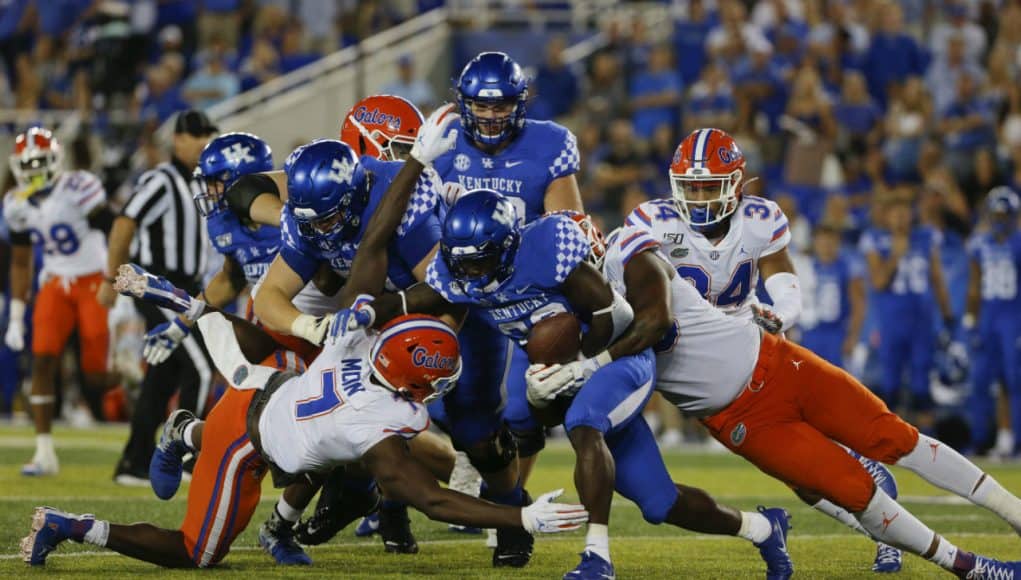The NCAA’s eligibility mulligan granted for the 2020 season has set up a situation where 2021 will test some of the outer bounds of the value of experience. For the first time there will be an appreciable number of what I’ve heard called “super seniors”, those being guys who would’ve run out of eligibility under normal rules but who can come back for an extra year of participation.
In the past such a player would’ve had to get a medical waiver to become such a player, but doing so implies that one of the years in which he didn’t redshirt was largely or entirely wiped out by injury. And by definition, he’d have to be a sixth-year senior.
Not so this year. Some, maybe many or even most, of the 2021 super seniors will be in their sixth collegiate years, but some might’ve played four years from their true freshmen seasons in 2017 and will be fifth-year seniors with some extra games played.
Thanks to the mulligan, some teams lost almost no one from their 2020 rosters. Mostly they’re the ones that don’t have a lot of immediate NFL prospects.
UF is not one of those teams. The Gators produced a healthy number of future draft picks off of the 2020 team, and a half dozen borderline-at-best pro prospects chose to leave school as well.
As a result, UF only has six true super seniors among the scholarship players on the 2021 spring roster. Two of them, Antonio Shelton and Daquan Newkirk, are graduate transfers, which means only four of the possible super seniors from the ’20 team actually returned.
Stewart Reese and Jean Delance from among the four are reportedly penciled in to start on the line again this year. Jeremiah Moon will get playing time on the defensive front when healthy, but 2018 is the only season in which he played in every one of the team’s games. Rick Wells is the final returning super senior, and he might get some run in the extended receiver rotation as last year. There has not been and spring buzz to date of him figuring to have a major role.
Shelton and Newkirk are a major reason why the defense should improve, providing much-needed experience and depth to the defensive line. Whether those two specifically were going to be available or not, UF had to go get one and preferably two DTs from the portal. Given how much of defensive success flows from having a stout front, the small super senior class will have an outsized influence regardless.
Yet nationally, UF is towards the bottom in returning production. ESPN’s Bill Connelly takes a full look at what each team returns as opposed to just counting starters, and it’s my favorite measure for seeing what teams bring back from year-to-year. As of February 1 when Connelly published his initial figures, the Gators landed 108th in the country with 55% of production returning for 2021. That number, as with every team, takes incoming and outgoing transfers properly into account as of that date of publish.
For perspective, UF returned 77% of production from 2018 to 2019 and 65% from 2019 into 2020. The figure for ’21 is low for recent Florida standards.
It is also low by any team’s standards. Returning 55% in 2019 would’ve placed a team 101st in the country; in 2020 it would put a team 96th. That the Gators are 108th with the same percentage level shows that more teams are returning more production than normal, as you’d expect in light of the mulligan.
Usually returning production tops out in the mid-80s. This year three teams — UL-Lafayette, UCLA, and Miami — return more than 90% of their production. Every team in the top 26 in the measure for this year is at or above 80%. At the same rank in the past two years, teams would be in the 70s.
Having a low returning production number doesn’t have to be a bad thing necessarily. As I alluded to above, producing a lot of NFL players will tend to get a team a lower figure here. In 2020, Clemson returned the same 55% as Florida does this year. Alabama is also returning 55% this year and is typically in the bottom half of the country.
The Gators’ schedule isn’t exactly brimming with teams chock full of super seniors either. Bama is even with UF, and Tennessee and South Carolina return even less. Georgia is at 62%, if you’re curious, and even the G5 opponents are fairly low with Florida Atlantic at 64% and South Florida at 59%. LSU (79%), FSU (73%) and Missouri (72%) are the teams with the most returning production on the slate, and they’re in the neighborhood of what Florida returned in 2019. They’re up there but not outrageously high.
Still, the story of the spring for Florida has been development. It has to be. The Gators comparatively lost a lot of players from last year and had dozens of guys from across three different recruiting classes in their spring practice sessions ever.
Some teams will have the luxury of getting to lean on a bunch of super seniors this year to try to hit a peak of some sort. Florida will instead have to look to its up-and-comers to keep momentum going. The Gators won’t be a groundbreaking data point in the study of experience this year.


